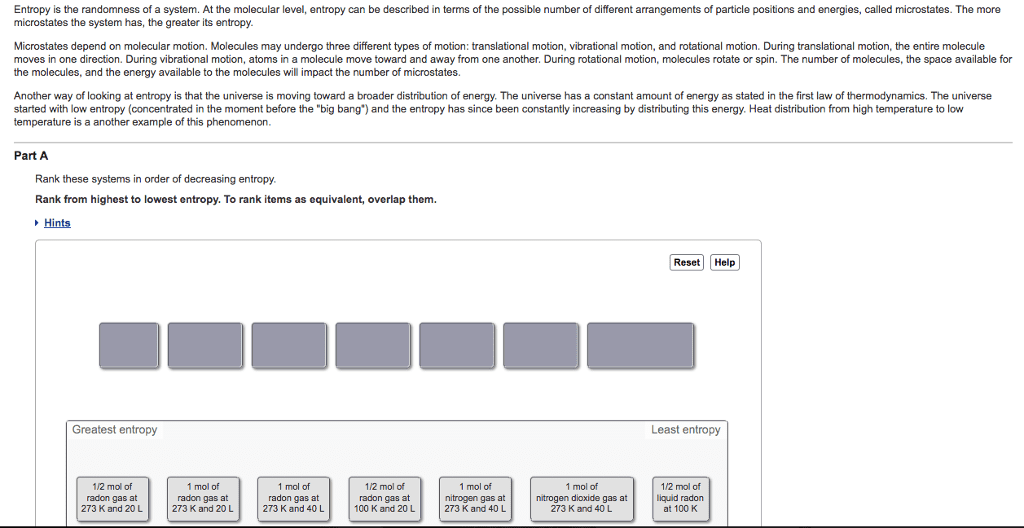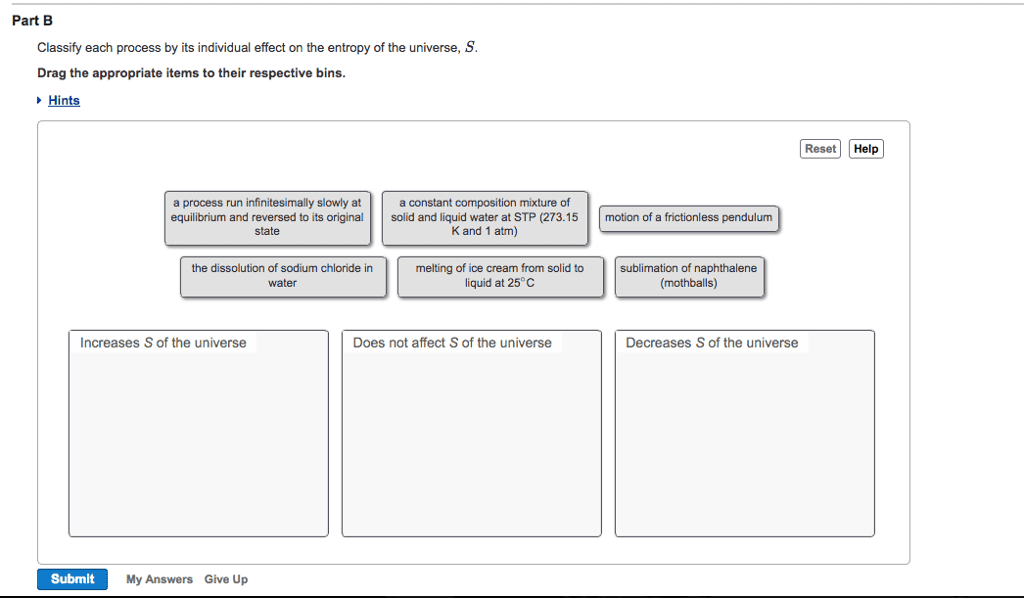CHEM1101 Midterm: Thermodynamics recap

Effect of Volume and Temperature Change on the System
• If e iease olue, thee ae oe positios possile fo the oleules. This esults i
more microstates, so increased entropy.
• If e iease tepeatue, the aeage kieti eegy increases. This results in a greater
distribution of molecular speeds. Therefore, there are more possible kinetic energy values,
resulting in more microstates, increasing entropy.
Entropy on the Molecular Scale
• The ue of iostates ad, theefoe, the entropy tend to increase with increases in
-temperature
-volume-
the number of independently moving molecules
Entropy and physical states
• Entropy increases with the freedom of motion of molecules.
• S(g) > S(l) > S(s)
• Entropy of a system increases for processes where
➢ gases form from either solids or liquids.
➢ liquids or solutions form from solids.
➢ the number of gas molecules increases
during a chemical reaction.
Third Law of Thermodynamics
• The etopy of a pue ystallie sustae at asolute zeo
is 0.
• Coside all atos o oleules i the pefet lattie at K;
there will only be one microstate.
• S = k l W = k l =
Standard Entropies
• The efeee fo etopy is K, so the alues fo eleets ae ot J/ol K at K.
• Stadad ola etopy fo a gas is geeally geate tha fo liuids ad solids. Be
aeful of size! • Stadad ola etopies iease ith ola ass.
• Stadad ola etopies iease ith ue of atos i a foula.
Entropy changes
Entropy changes for a reaction can be calculated as follows:
S° = nS°(products) – mS°(reactants)
where n and m are the coefficients in the balanced chemical equation.
Entropy Changes in Surroundings
• Heat that flows into or out of the system changes the entropy of the surroundings.
• For an isothermal (constant temperature) process
find more resources at oneclass.com
find more resources at oneclass.com
Document Summary
Effect of volume and temperature change on the system: if (cid:449)e i(cid:374)(cid:272)(cid:396)ease (cid:448)olu(cid:373)e, the(cid:396)e a(cid:396)e (cid:373)o(cid:396)e positio(cid:374)s possi(cid:271)le fo(cid:396) the (cid:373)ole(cid:272)ules. This (cid:396)esults i(cid:374) more microstates, so increased entropy: if (cid:449)e i(cid:374)(cid:272)(cid:396)ease te(cid:373)pe(cid:396)atu(cid:396)e, the a(cid:448)e(cid:396)age ki(cid:374)eti(cid:272) e(cid:374)e(cid:396)gy increases. This results in a greater distribution of molecular speeds. Therefore, there are more possible kinetic energy values, resulting in more microstates, increasing entropy. Entropy on the molecular scale: the (cid:374)u(cid:373)(cid:271)e(cid:396) of (cid:373)i(cid:272)(cid:396)ostates a(cid:374)d, the(cid:396)efo(cid:396)e, the entropy tend to increase with increases in. Entropy and physical states: entropy increases with the freedom of motion of molecules, s(g) > s(l) > s(s, entropy of a system increases for processes where. Gases form from either solids or liquids. The number of gas molecules increases during a chemical reaction. Entropy changes for a reaction can be calculated as follows: S = ns (products) ms (reactants) where n and m are the coefficients in the balanced chemical equation.


